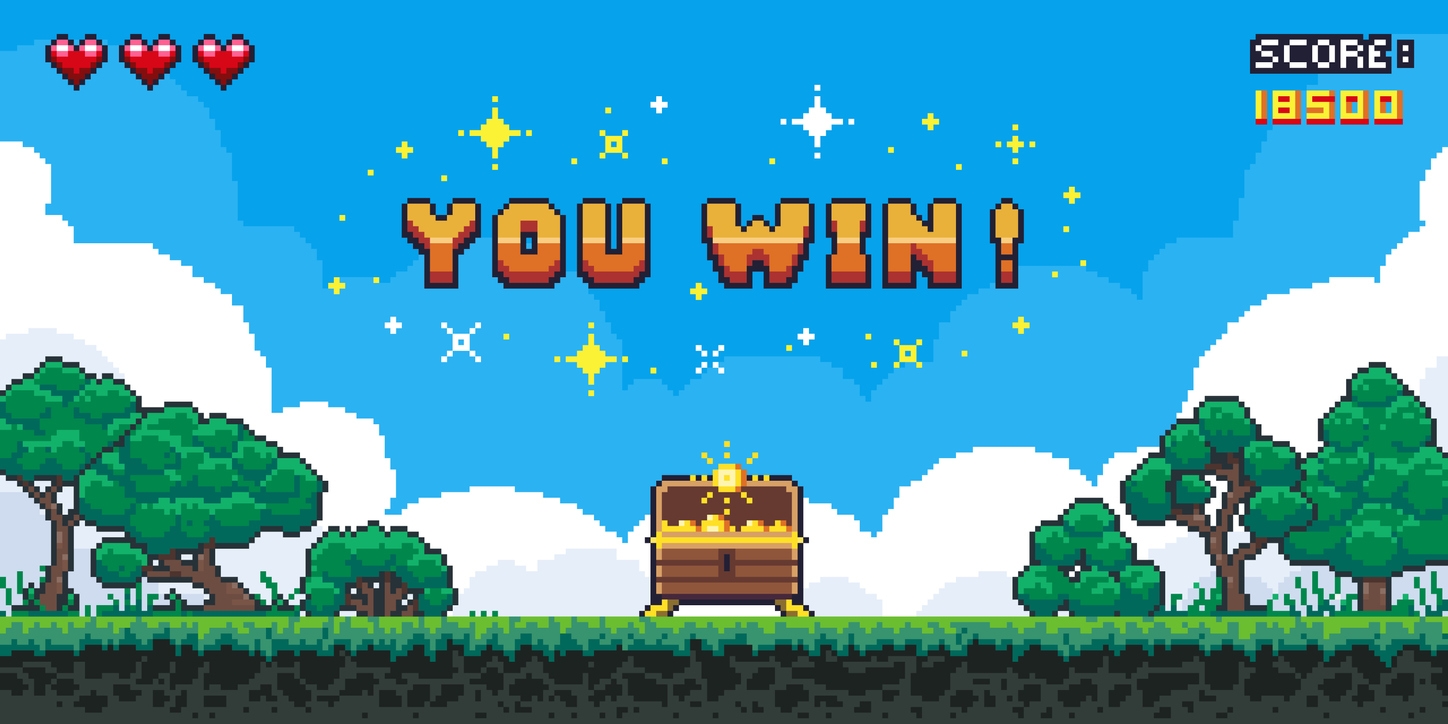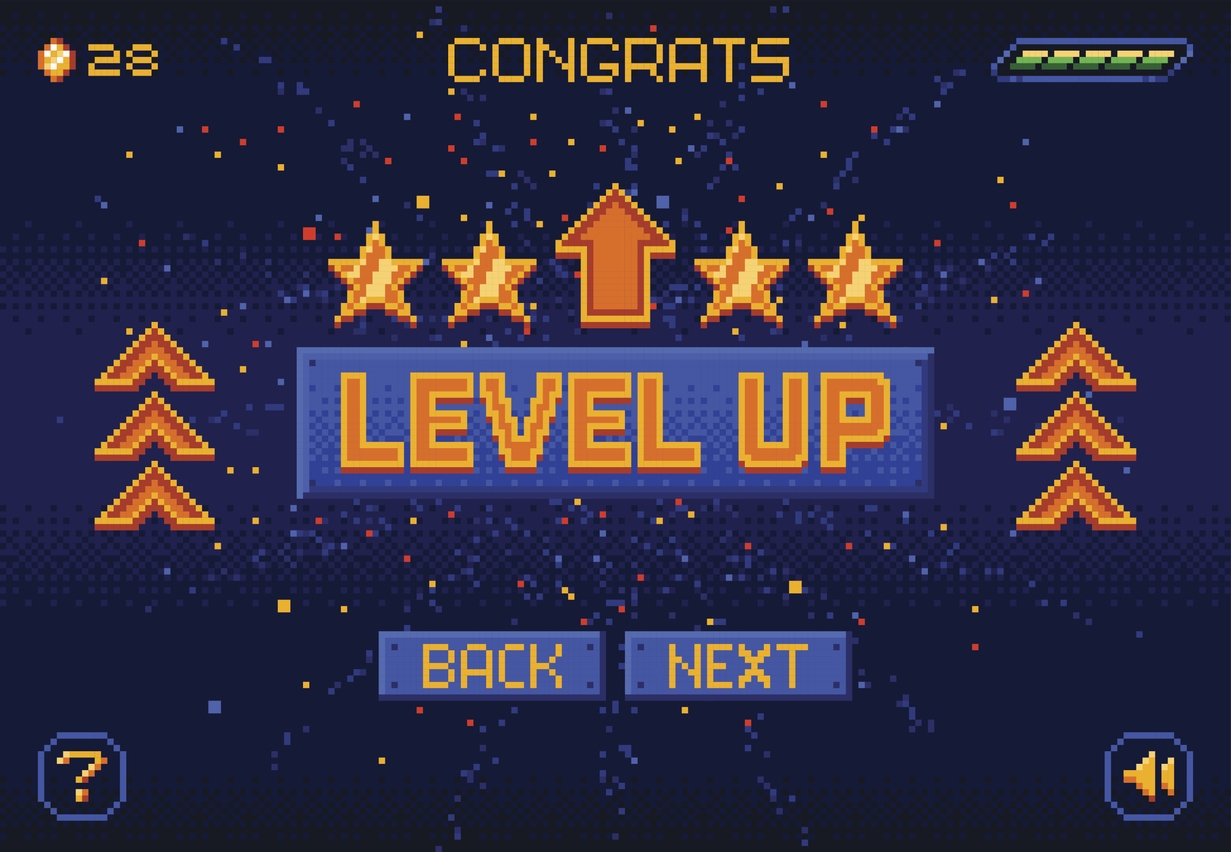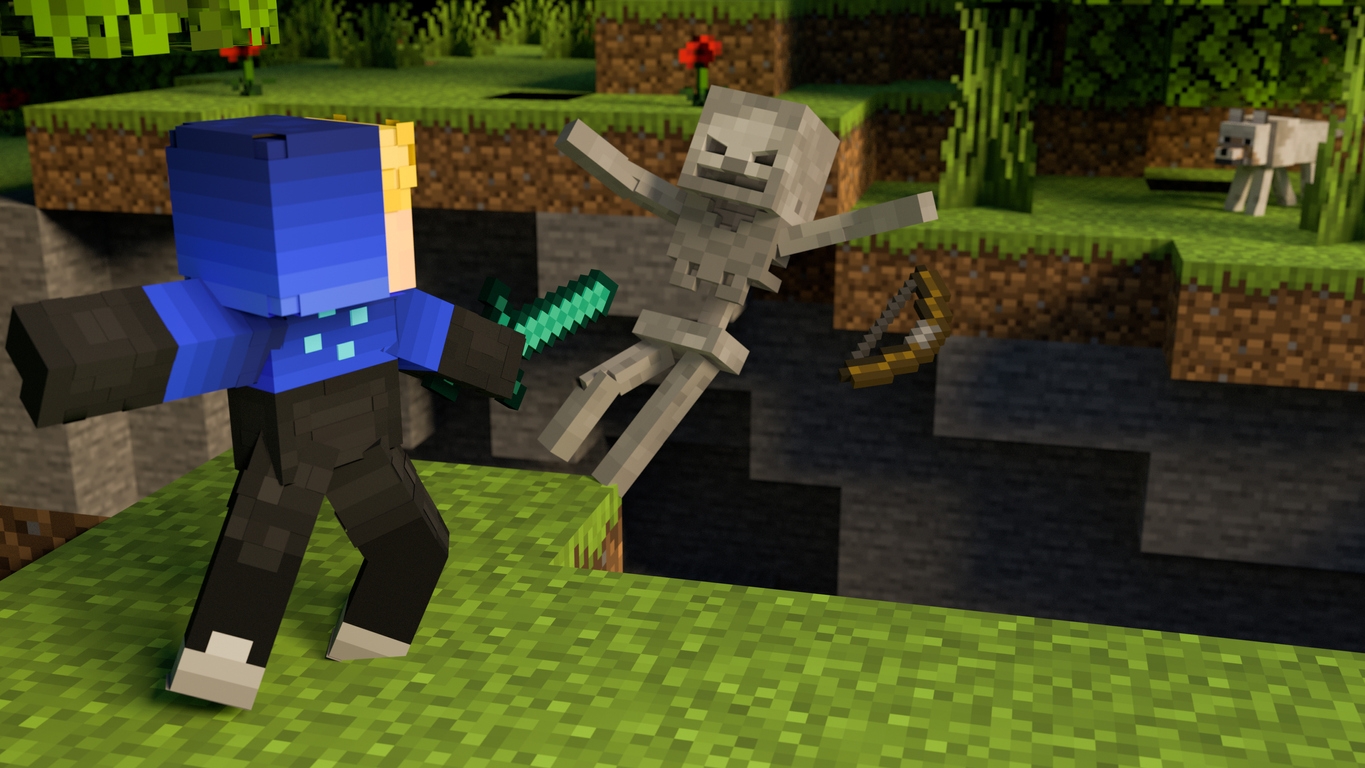When one thinks of career prospects in the creative field, the gaming industry is one that one needs to tap into if one is creative and loves taking challenges. This massive industry is probably mightier than Hollywood, and why won’t it be when on average 20 hours a week are spent on videogaming? [1]
An interesting fact about video games is that people spend fortunes and a significant amount of time on buying, playing, or even watching video games, in fact, as per a survey conducted in January 2021, on average 5.9 hours of binged gaming session was recorded. [2] While it is likely that the gaming market will grow to $545.98 billion by 2028, the reality is the game development process is not everyone’s cup of tea. [3] The number of stages it takes to process and develop a game is daunting and one is always on the edge to make the game a success!
Reason for Gaming Industry Success
From being part of daily friends’ sessions to being an active way to recharge when in corporate culture, video games have become a reality of everyone’s life. But why is it that gaming is so popular? Unlike the infinite game of life, video games have the potential to make one have closure. One needs to follow rules to make it through and those rules define the winner, certainly, something we all seek in life, the properly defined results. No wonder why one feels a tremendous joy and adrenaline rush to play video games. If you happen to be a game fanatic and want to learn all the steps of the game development process, you need to read on to know how an apparently simple and entertaining activity has so much hard work and dedication behind its development. In fact, video games through the years have become more than just a mode of entertainment. Playing and developing them have become a full-fledged career choice for many.
What is Game Development
Before learning about the lengthy processes and principles it takes to develop a game, it is essential to understand what is game development. In simplest terms a process whereby one design, create, and launch a video game; the whole process of a video game from ideation to reality is called game development.
The 7 Basic Principles of Game Design
Anyone willing to take a dive into a career in game development needs to understand that game development is more than the technicalities like coding or programming. One needs to have a clear understanding of how to design and develop a game so as to define a player’s experience and excitement. Therefore, some imperative game design principles are to be grasped before learning all about the game development process.
1. A Defined Core Action for the Game
Irrespective of the type of game you plan to design, the main gameplay should be designed around easy core mechanics for making the gaming experience simpler. An example could be a simple game of Tetris that requires one to rotate the objects to complete the row, or a Candy Crush where you can only move your candies in a couple of directions to crush them. Though each game has a lot of technicalities, their core gameplay mechanics are simple for the players to concentrate solely on their moves.
If the core actions are confusing, it will not take much time for the player to get over the game as it fails to keep his/her interest intact.
2. A Mission Worth Playing For
When designing a game ensure that the player has a certain mission to achieve in order to keep the player intrigued and motivated. It could be anything from collecting gold coins in Subway Surfers to designing the whole city like that in the Smart City Plan. The idea is to allow the player to connect with the task and engage thoroughly with the excitement of the play. [4]
3. Rewarding the Gamer
To pique their interest, it is necessary to provide them with incentives that they can avail on every level. These could be virtual coins or rewards that are redeemable to buy game essentials or unlock the trial versions as well. [5]
4. Simpler to Understand but Challenging to Play
A successful game always captures the interest of its player, enough to cause them to take action. By that, it means that the game principles should be very simple to understand and learn so the player finds it fun to play and doesn’t spend much time in getting a hang over the game.
Once they grasp the idea of the game, with each level, the difficulty should be raised so as to keep the interest intact. No one wants to put time and effort into a game that doesn’t challenge them.
5. Customization of Gameplay
While you have designated the core gameplay mechanics, customization of gameplay options for multiple tasks, will allow players to connect more with the game and feel the freedom to select as per their expertise and skills. Allowing them varieties, for example, in gears or weapons if it’s a war game or car options if it’s a racing game, makes the players feel authoritative.
These customizations can be in the options of shortcuts as well. Some players, with time, gain considerable expertise with the game and then for them, shortcut options seem more viable than following the long trails that they don’t find challenging enough to retain their interest.
6. The Occurrence of Multiple Events or Scenarios
Often it gets boring to keep doing one task repeatedly, therefore it is necessary that multiple events occur simultaneously to keep the player’s enthusiasm intact and to make the competition harder. [6]
7. Building Anticipation
The players are likely to lose interest if they do not perceive a significant challenge to winning with clear rewards and engagement by the game. To keep the gamer interested, adding anticipation through various methods can be rewarding. A simple sound or a notification can do wonders to keep the player glued to the game.
Making sure the appropriate sound is set, is equally significant as sound can either irritate the player or cause him/her to keep playing.
Once you master these principles of designing video games, you will likely understand and implement the game development processes to develop a game worth hitting the market. Though ideation or defining design principles for your game is not an easy task, it gives clarity of what one wishes to achieve from the video game he/she wants to launch and whether it has what it takes to pique the interest of the right audience. The design development process is more of the technical details and formalities of the video game.
The Game Development Process
In the broader sense, the game development process has three main stages: Pre-Production, Production, and Post Production. The whole process involves working on the initial concept by formulating a story, designing characters and environment, working on technicalities, and testing or prototyping before launching the final video game into the market.
Pre-Production Phase: Researching
Every idea evolves into something bigger and better; same is the case for the game development process. It goes through multiple stages to take shape and develop into a final video game that is enjoyed by the end users.
Conceptual Design Phase
The design and Development process cannot be initiated without a conceptual phase. It is when all the participants of the game process share their knowledge, views, opinions, and expertise to brainstorm on the initial idea of the game theme. [7]
During this phase practicalities are gauged, available technical skills are calculated and the success factors of the game idea are questioned. This phase further provides clarity regarding the genre, the game’s target audience, and the characters’ visages.
Research and Development Phase
During this phase, the demographics of the target audience are thoroughly studied. Also, it is during this phase that the requirements of the staff, software, and budget are decided. To advance the process, a Game development document is drafted in this stage. This document helps in developing a planned schedule; it further highlights the requirements, main elements, and the availability of the resources and budget available.
The whole purpose is to specify tasks, resources, and deadlines for each department to make the process simpler to follow.
Production Phase: Where Everything Gets Done
As entertaining video games are, their design and development processes are as complex. Once the demographics are defined, concepts are clear and schedules are set, the most dynamic yet complex process, the production phase, starts.
The Design Process
This process involves formulating the structure of the story into a game; it requires a lot of technical mechanisms to shape the game, its system, and its operation.
Coding the Game
Coding requires programming the specification as per the requirements of the designer and further developing the game plan to be assigned to the developers working on different aspects of the game.
The Art and illustration
The whole scenarios, environment, or aura are designed by 2D or 3D artists and illustrators. They are the main lead when it comes to designing the characters or developing the game architecture.
Giving Life to Characters
Once the characters are designed their movements, actions, and the impact of the environment are planned by the animators who give life to the characters and add a touch of realism to them through animation.
Writing
While game developers come up with the idea or concept, it is always the scriptwriters that give voice to the idea through their compelling script.
Storyboarding:
This is where all the scenarios are shaped to formulate into a game story. The frames are designed during storyboarding to make sequencing easier to follow by the production team.
Sound
Sound has a very resonating role to play in the game industry, therefore a good sound impact is highly needed to encourage play, keep the player’s interest in the game, and add a fourth dimension to the game through sound effects. An example could be how if it is a horror game, a creaking door sound in a dark room will cause the player to either anticipates danger or will create the mood of something unsettling.
Lighting
Similar to sound, lighting is essential to create a dramatic impact or mood of the game, therefore a game designing process requires a game lighting artist who works on the visual effects created using the light.
Mapping
Once all the design and sequencing phases are aligned, the game sequence is developed where the programmers map how the game will be played and levels will work in the game.
Communication
Every game has a defined set of rules that the player has to follow to progress. This interactivity of the player with the game is programmed through a variety of functions included in the development phase.
The Addition of Artificial Intelligence
Customization is programmed using artificial intelligence in the game development process. These are actions that will be dependent on how the gamer will communicate or interact with the game. For games to work without any glitches, highly complex algorithms are designed for video games.
Menu
The menu is important as it provides the gamer with all the necessary information, from telling him/her about scores, to the “how to play” guide and the time of each level.
Production
The whole game design process has to be managed to ensure all the members of the team are on the same page. The production team will assist the team members; identify loopholes in the design process and follow up on the timeline and budget for the smooth running of the game design process.
Once satisfied, the producer hands over the process to the quality assurance team that keeps checking on the technical detailing of the process. Basically, QA detects bugs and consults developers to further enhance the development of the game by fixing all the glitches and bugs. This allows the smooth running of the video game to ensure an entertaining and thrilling experience for the players. [8]
Post Production: The Marketing Phase
Once a prototype is developed, the team, mainly of programmers and developers, works further on the design development process to fix all the bugs and shortfalls in the video game before making it viral or launching it to the market. [9]
An efficient marketing process makes the game accessible to the targeted audience. The posters, advertisements, and videos are now the commonly used mediums to market video games. With vlogging becoming a norm, now influencers, famous gamers, and youtubers are also included in the marketing process.
The Interesting Facts about Video Games:
Who knew that the video games that we love so much have this whole complex process to them? But certainly, the end result is always rewarding. As interesting as the entire game design and development process is, the facts about video games are equally intriguing.
- While it is assumed that video games are something new, in reality, the first video game was developed in 1958.
- Minecraft is the all-time favorite game. Its popularity can be measured by the fact that so far more than 200 million copies have been sold.
- Computer Space was the first game that was advertised in 1971, but it did not manage to grasp the interest of the people at the time. [10]
Conclusion:
Now that you are familiar with the whole process that is involved in the design and development of a single game, you can have an idea if it is something worth exploring as a career path. The number of gamers is increasing every day, currently, more than 3 billion people are into gaming, so, this field is worth giving a chance. From the famous Minecraft to the old TicTacToe, every game requires a team who works diligently to make entertainment possible for gamers. Next time you play your favorite game, don’t forget to appreciate the people who put in so much effort to make entertainment accessible to you.
Reference:
[1] Gen Z engages with games for 12 hours per week on average – How much time do consumers spend on media platforms? (n.d.). https://newzoo.com/. https://newzoo.com/resources/blog/how-much-time-do-consumers-spend-on-media-platforms
[2] Average hours binge gaming worldwide 2021. (2021, March 16). Statista. https://www.statista.com/statistics/936732/consecutive-time-spent-playing-video-games-worldwide/
[3] Gaming market size, share & growth | Research report [2028]. (n.d.). Fortune Business Insights™ | Global Market Research Reports & Consulting. https://www.fortunebusinessinsights.com/gaming-market-105730
[4] 5 timeless principles of good game design for 2023 | Evercast blog. (2023, April 6). Evercast: Video Collaboration Platform for Remote Creators. https://www.evercast.us/blog/game-design-principles
[5 Www.thedesigngym.com. (n.d.). www.thedesigngym.com | 520: Web server is returning an unknown error. https://www.thedesigngym.com/seven-principles-of-game-design-and-five-innovation-games-that-work
[6] Allmer, M. (2009, February 27). The 13 basic principles of Gameplay design. Game Developer. https://www.gamedeveloper.com/design/the-13-basic-principles-of-gameplay-design
[7] 5 key game development stages: From idea to success. (2023, May 24). Game-Ace. https://game-ace.com/blog/game-development-stages
[8] Martynenko, E. (2023, May 2). What are the stages of game development? Pingle Studio. https://pinglestudio.com/blog/full-cycle-development/game-development-stages
[9] Rao, N. (n.d.). What is the game design process? The Online Game Design, VFX & Animation School | CG Spectrum. https://www.cgspectrum.com/blog/what-is-the-game-design-process
[10] 9 interesting facts about video game design you didn’t know. (n.d.). NJIT Online. Get a top STEM degree without leaving home. | Online Programs. https://online.njit.edu/blog-posts/9-interesting-facts-about-video-game-design-you-didnt-know








